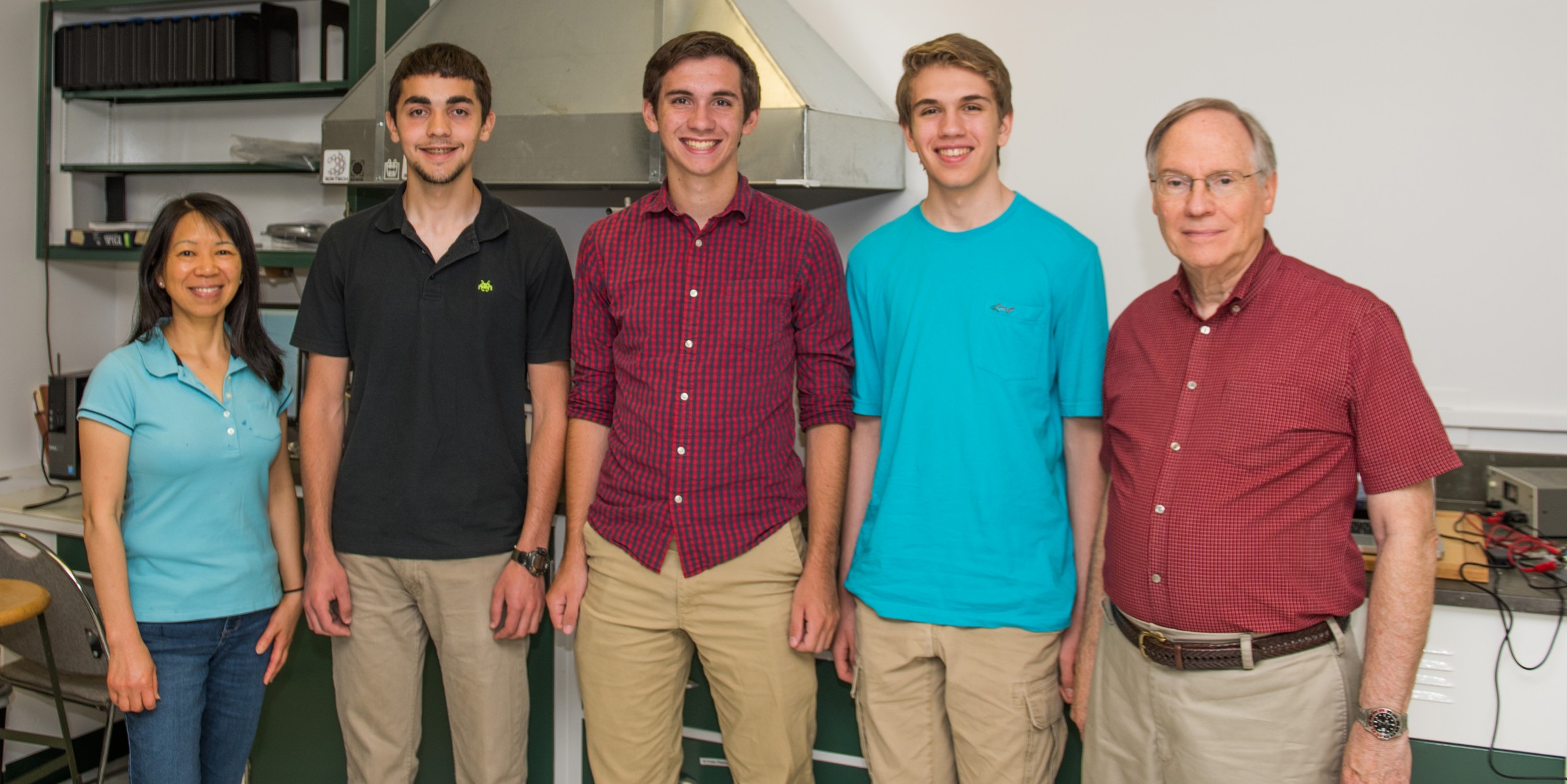3D Printing and Humidity Sensor Projects

Team (pictured L to R): Tracy Zhang, Ph.D.; Michael Most, HH Dow High; Wesley Cummings, HH Dow High; Stephen O’Donnell, HH Dow High; Robert Bubeck, PhD
The 3D printing and sensor team worked on two specific projects for Summer 2017:
1.) 3D Printing and Evaluation of Nano-carbon Containing Thermoplastic Composites
Acrylonitrile Butadiene Styrene (ABS) and ABS compounded with XGnP™ graphene nanoplatelets at the 5 wt. % and 10 wt. % levels have been prepared. Test samples are being fabricated from these novel ABS blends and being characterized by their mechanical properties using tensile and Izod impact testing. Both material and 3D printing fabrication variables are being assessed. 3D printing patterns selected in printing the test samples are to be a characterized to determine their influences on the mechanical properties. Test bars fabricated to shape by 3D printing are to be compared with analogous bars milled to the identical shape to determine the potential differences in the resulting physical properties. The end purpose of the study is to ascertain how the strength and toughness of ABS thermoplastics can be enhanced in real-world applications in areas such as automotive/transportation, electronics, appliances, etc.
Hypothesis: Nano-carbon containing ABS composites can be fabricated into parts via 3D printing to obtain roughly double the stiffness (modulus) without an unacceptable decrease in toughness.
2.) 3D printing of Humidity Sensors
The goal of this project is to demonstrate that very low-cost humidity sensors can be fabricated using either (1) polylactic acid (PLA) made conductive by the incorporation of XGnP™ graphene nanoplatelets or (2) Acrylonitrile Butadiene Styrene (ABS) made conductive by the addition of carbon nanotubes (CNT). The effects on sensor performance are being determined as functions of sensor electrode design and the approximate 400 to 1 difference of the resistivity of the two printed polymers; the conductive ABS/CNT composite being the less conductive. Microporous nylon, polycarbonate, and paper films are being used as substrates upon which the sensors are printed and being evaluated. The sensors will be measured for response time and recovery by electrical measurements using calibrated humidity chambers. It is expected that this process of fabricating sensors will result in more durable versions compared to sensors made using conductive inks and far more cost-effective than those fabricated using vapor deposition processes.
Hypothesis: Low-cost humidity sensors with acceptable reproducibility and accuracy in response can be easily fabricated using 3D printing of conductive thermoplastics.



